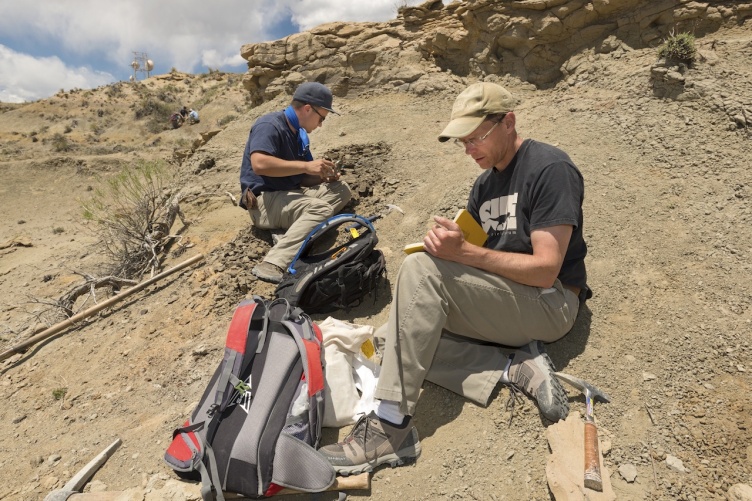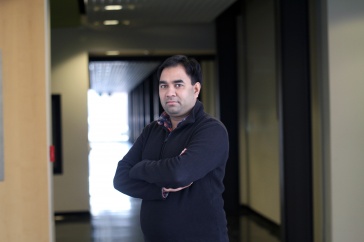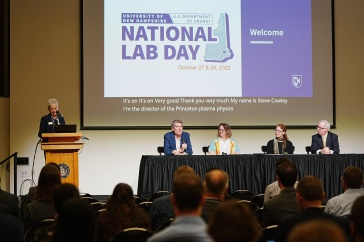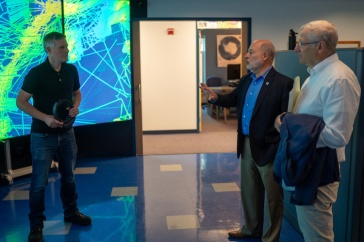
Professor of Earth science Will Clyde (right) and his master's student Anthony Fuentes '19G collect rock samples from the Denver Basin to analyze and determine the age of newly discovered fossils. Credit: Tyler Lyson, Denver Museum of Nature & Science.
New research from UNH sheds light on how life on Earth rebounded 66 million years ago after an asteroid wiped out dinosaurs and most other species. Professor of Earth sciences Will Clyde and Anthony Fuentes ‘19G, working in a specialized paleomagnetism lab at UNH, analyzed a large collection of well-preserved animal and plant fossils discovered in Colorado and determined they date to within the first million years after the mass extinction, an interval of time that is otherwise very poorly sampled globally.
“We have this incredible information locked up in these rocks just waiting to be discovered.”
The extraordinary collection of fossils (16 mammal species, as well as crocodiles, turtles and fruits), discovered in 2016 by a team from the Denver Museums of Nature & Science, reveals how the world and life recovered after the catastrophic asteroid impact that wiped out the dinosaurs. Clyde and Fuentes helped determine the age of this unprecedented find — thousands of exceptionally preserved animal and plant fossils — dating them to the first million years after the asteroid impact and painting a portrait of the emergence of the modern world.
“We often hear about the asteroid impact at the end of the Cretaceous and the demise of the dinosaurs, but we know much less about how ecosystems recovered after this mass extinction event, says Clyde. “These new fossil discoveries from Colorado provide a very unusual window into that period of recovery.”
Clyde and Fuentes are co-authors of the study in Science that’s gained widespread attention and is the subject of a NOVA documentary, “Rise of the Mammals,” streaming online. It was broadcast nationally on public television Oct. 30.
To determine the age of the fossils, lead researchers Tyler Lyson and Ian Miller from the Denver Museum of Nature & Science called on Clyde, who traveled with Fuentes (then his graduate student) to the Colorado site and collected rocks from above and below where the specimens were found. Back at UNH, the duo measured their magnetic signatures to determine their age, using the known sequence of Earth’s magnetic field flip-flopping over time.
“The fossil record never ceases to amaze me,” says Clyde. “We have this incredible information locked up in these rocks just waiting to be discovered.”
-
Written By:
Beth Potier | UNH Marketing | beth.potier@unh.edu | 2-1566



















































